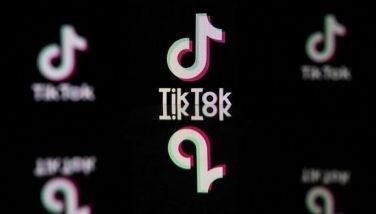This week in Tech
Xiaomi announces Heart Rate Tracking Mi Band pulse
Chinese company Xiaomi upgrades their fitness tracker, Mi Band, by adding real-time heart rate monitoring and appropriately calling it the Mi Band Pulse.
The Mi Band Pulse photoelectric light perception module can continually track your heart rate. This is on top of its other features, which include tracking distance and calories burned during your workout session as well as sleeping patterns.
It has the same 45 mAh battery as the first-generation Mi Band but still manages to last up to 30 days on a single charge.
Xiaomi’s latest fitness tracker was made available in China last Nov. 11 with a CNY99 ($16) price tag. As for availability elsewhere, it looks like the company is looking to hear from its Facebook fans posing the question, “Would you like to see this launched in your country, too?,” along with the announcement of the wearable.
Samsung launches gear S2 in Philippines
In a small event with members of both the tech and sports media in attendance, Samsung quietly launched the Gear S2 in the Philippines this week. The Tizen-powered smartwatch was first announced back in September at IFA 2015 in Berlin, Germany. Just like the those who got hands-on time with the Gear S2 in Berlin, those at the Philippine launch found the smartwatch’s rotating bezel a great way to interact with the device.
The Gear S2 is a symbol of progress for Samsung in the wearable department. The decision to go with their own operating system, Tizen, vs using Android Wear dramatically decreases the number of apps that will work with the smartwatch but the Korean company is already hard at work to get more developers involved.
The Gear S2, equipped with the sports band, will retail for P13,490 while the Gear S2 classic, equipped with what Samsung says is the more stylish leather strap, will sell for P15,490. For now, only wifi versions is being sold in the country starting Nov. 14.
Preorder the Gear S2 and get a free Level U headphone or get the Gear S2 Classic and get a free genuine leather strap at select Samsung Experience sores from Nov. 6 to 13.
Ipad Pro hits the market
Apple’s productivity tablet, the iPad Pro, hit the market this week. It was first made available for sale online on Nov. 11 and then later in stores in 40 selected countries including the US, UK, Japan, and China. Prices range from $799 to $1079.
At 12.9 inches, this is Apple’s largest and most powerful iPad to date. Its size, multi-touch functionality, and A9X processor lend itself nicely to multitasking.
For maximum productivity, Apple also made two accessories meant for the iPad Pro. One is the pressure sensitive stylus iPad Pencil ($99) and the other, the Smart Keyboard ($169) that magnetically latches on to Apple’s tablet. Both work exclusively with the iPad Pro and are sold separately.
Lenovo releases 3 new Vibe Phones - P1, P1M, AND S1
Battery life is always a primary concern for many of us smartphone users especially when we’re out and about for most of the day and Lenovo believes they have the smartphone that squarely addresses that need. The Lenovo Vibe P1, with its massive 5000 mAh battery, is expected to power you through the day while also powering your other gadgets. Yes, the Vibe P1 comes with an on-the-go (OTG) cable that lets you use the phone like you would a power bank.
The 5.5-inch Vibe P1 is equipped with a Snapdragron 1.5 Ghz Octa-Core processor and 2GB of RAM. It’s also LTE-compatible and comes with a 32 GB internal storage expandable up to 128 GB via a MicroSD card. It’s available in Platinum and Graphite Grey and retails for P14,999.
Next up is the Vibe P1’s little brother, the P1m. At five inches, the Vibe P1m still packs a massive 4000 mAh battery for its size. It’s also LTE-compatible and comes in Onyx Black, Pearl White and retails for P7,999.
Lastly, Lenovo sets its sights on selfie lovers with the Vibe S1. Featuring dual front-facing cameras, Lenovo believes this to be the phone that takes selfies to the next level. The secondary two-megapixel camera on the front allows for advanced depth of field and a variety of options to edit your background.
Do you see yourself in Paris someday? Take a selfie and plop the Eiffel Tower into the background as you strive to make that dream a reality.
The Vibe S1 is also a beast under the hood with a 64-bit MediaTek 1.7GHz octa-core processor, 3 GB of RAM, and LTE connectivity. Like the P1, it comes with a 32GB internal storage expandable up to 128 GB via a MicroSD card. It’s available in White Gold and retails for P15,999.
Starmobile Spectra
Speaking of dual cameras, Philippine brand Starmobile just launched one of its own, the Starmobile Knight Spectra.
The Knight Spectra is the first Philippine branded phone to sport dual-main-cameras, one that’s 13 megapixels, and the other two megapixels. Starmobile says the two work in tandem to elevate the point-and-shoot experience of Filipinos.
The camera has three main features: Super ReFocus, which lets the user choose refocus a photo after it has already been taken. Chroma Flash, which takes two photos in rapid succession, one with flash, and one without then combining the two photos to produce one with just the right exposure. And Opti Zoom, which takes multiple photos for better texture and sharpness of zoomed-in images.
The 5.5-inch Knight Spectra is more than just a camera phone with its 64-bit Octa Core and 3GB of RAM. It also has two SIM card slots that both support LTE. If you don’t need the other SIM card slot, use it to add up to 64GB storage to the phone’s 32GB of internal memory. It even has digital TV capabilities.
The Starmobile Knight Spectra will be available from Starmobile stores and resellers starting the fourth week of November for P14,990.
Coming up: Huawei flagship store in Philippines
Huawei sets the date for the grand opening of their Philippine flagship store on Nov. 21 at SM Cyberzone Mall of Asia.
Expect their best and latest smartphones, tablets, and wearables to be on display. We’re curious, though: Does this mean Google’s flagship smartphone, the Nexus 6P, made by Huawei, is coming to the Philippines? We sure hope Huawei sticks to its tagline to ‘Make it possible’.
- Latest


























